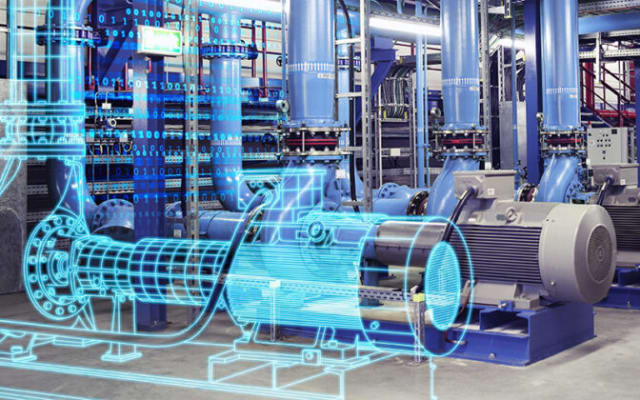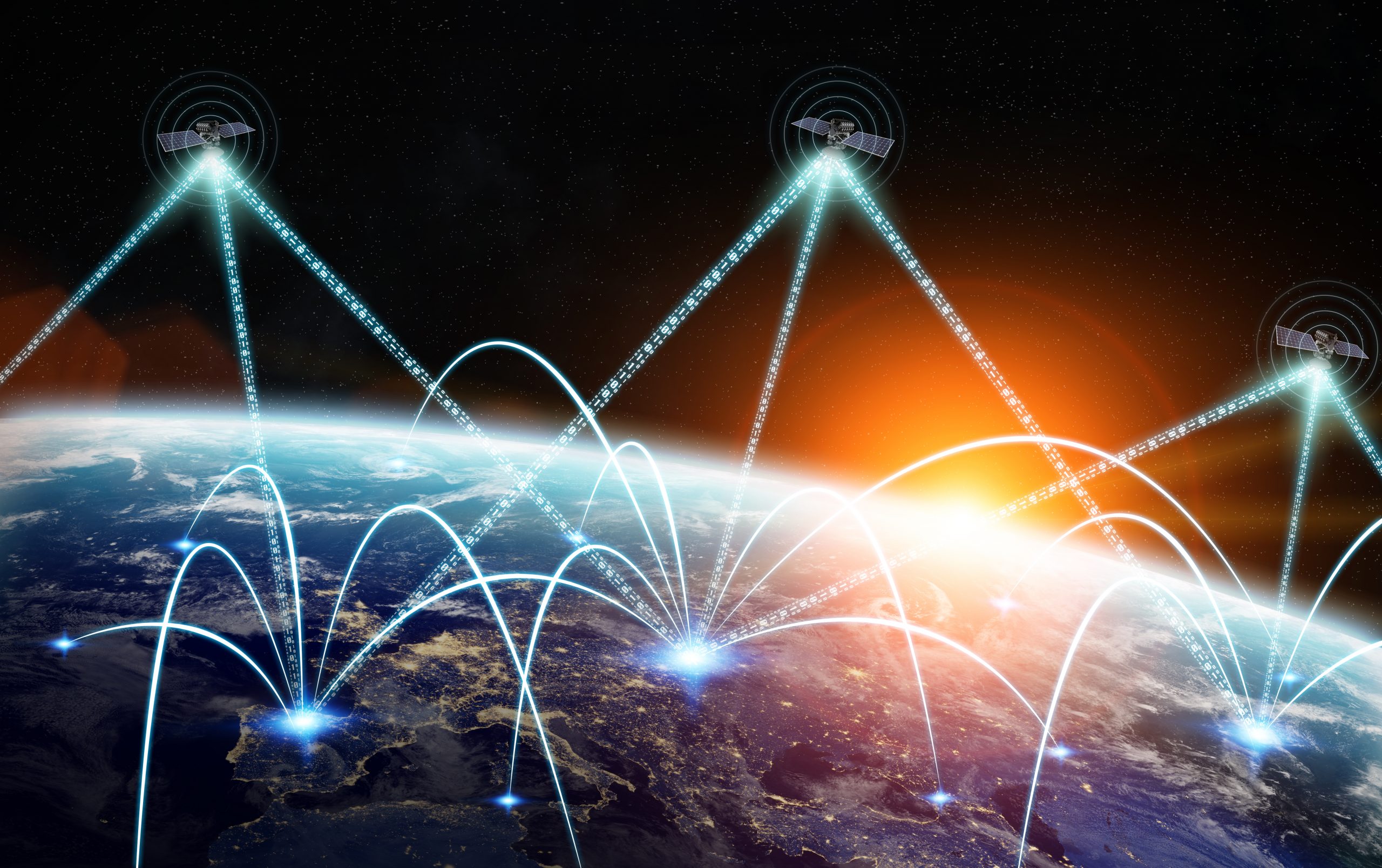Nowadays, you hear the terms “Smart Farming”, “Smart Manufacturing”, “Smart Infrastructure” or “Intelligent Transportation Systems” used often. Advancements in computer vision software, Artificial Intelligence/Machine Learning, robotics, and drones are beginning to transform traditional agriculture, manufacturing, and transportation. The primary goal of automation technology is to cover easier, mundane tasks.
This article is based on the Tech 2030 podcast episode “Improving the Human Experience.” Click here to listen
To what extent will these technologies change the way we live? Can they improve how we experience the world? Or is it just hype?
“Let us take a closer look at a smart manufacturer. The definition of manufacturing has changed in the last few years. There is an expectation that everything should be automated, that you have to use AI to improve efficiencies,” said Ganesh Harinath, Vice-President and CTO of 5G Mobile Edge Computing, AI Platforms & Next-Gen Applications at Verizon Media.
“We want to determine an issue very early on when [all the data] is being assembled. [For example] A video camera capturing all the activities and then recommending or suggesting in a scenario. Here is where edge compute and 5G private networks come into play.
“[Another example is] Factories, where 5G is going to play an astronomical role. In few cases, 5G private, in many cases, 5G public will start the experience; artificial intelligence is going to play a big role. We’ll start to see insights and to make the right decisions, to forecast as well. And when you take any ecosystem besides industries, you need compute and you need storage. And there’s a lot of innovation around these spaces too,” Harinath said.
Applying Technology to Our Lives
When you are in the produce section in a grocery store, have you noticed that the tomatoes, apples, oranges appear to be of similar size and colour? That’s not a coincidence. How is the technology applied, from farming to packaging and delivering the produce to consumers?
“In the last few months, what’s becoming clear is the space of consumer and AI is really touching people in many forms. And what I’m seeing goes beyond work. It’s so fascinating to see how computer vision is actually used to really separate out different grades of produce,” Harinath explained. “Computer vision is powering there.”
Some technologies that farms are applying include harvest automation, autonomous tractors, seeding, weeding, and drones.

The benefits of automating traditional processes are monumental in improving operations, as well as tackling issues from consumer preferences, labour shortages, and the environmental footprint.
“At the end of the day, costs come down when we start to improve efficiency. The world of ‘digital twin of anything’ would be very normal and common in years to come,” the Verizon VP said.
“What does it mean? A replica or a digital version, near real-time, being able to self-generate insights, reflecting the exact state of the situation. And then, we can start to work on building fantastic models to come up with a very cost-effective approach of distributing the infrastructure and so on. Not just in telecommunications, in any case for that matter. That’s an area that is actually starting to evolve.”
A digital twin is a virtual representation that serves as the real-time digital counterpart of a physical object or process. You can also think about it as a “virtual clone.”
Though the concept originated earlier (attributed to Michael Grieves, then a professor at the University of Michigan, in 2002), the first practical definition of a digital twin originated from NASA to improve the physical model simulation of spacecraft in 2010. Digital twins are the result of continual improvement in the creation of product design and engineering activities.
An essential feature of a digital twin is the communication link between it and the original physical object it is replicating. Sensors on the physical object identify what is happening in the real world and reflect those effects on the digital twin. Then computers can work out the best response for the digital twin, and this response also takes place on the original object.
It’s All About the Human Experience
One example is the application of digital twinning to the vehicle-to-cloud based advanced driver-assistance systems (also known as ADAS) on connected vehicles.
In this system, the cloud server creates a digital world based on the data received from the car, processes it using the proposed models, and sends it back to the connected vehicles in the real world. Drivers can benefit from this digital twin paradigm and improve their driving experience, even if all computations are conducted in the digital world, like the cloud.
This entire process sounds like a lot of work going on in the background. Would 5G be sufficient to enable this real-time application?
“It’s fascinating how 5G is going to change the entire ecosystem. But the very important question that you have to ask is: Is 5G enough for the next generation application? I’m sure there’s already conversation around 6G, but when you take a closer look at any generation of wireless, latency and bandwidth are very important,” Harinath pointed out.
“There are many attributes that get factored into a generational change in wireless. We always try to bring in the 10x change, in few cases, a 100x change from the previous generation. We always try to improve or enhance the human experience. When you take a close look from the technology perspective, there’s so much power in our hands today with a smartphone, but it really requests seamless connectivity. And as we start to look forward, the needs are right there, like in AR/VR or 8K,” the expert said.
Digital twin technology increases efficiency between organizations, products, and customers by sharing detailed information about a physical object with a larger number of agents, unconstrained by physical location or time.
In his white paper on digital twin technology in the manufacturing industry, Michael Grieves noted that:
“In the past, factory managers had their office overlooking the factory so that they could get a feel for what was happening on the factory floor. With the digital twin, not only the factory manager, but everyone associated with factory production could have that same virtual window to not only a single factory, but to all the factories across the globe.”
With data being collected and shared for the applications, there are always concerns of security and privacy.
“The whole technology ecosystem has been paid more attention, especially because of ransomware attacks. These things will continue to exist, but we’ll fight them out. There’s definitely a need for enhancing the security and a lot of work [in this field] is going on,” Harinath said.
Power is Access

So far, consumers and enterprises get high-speed internet access from 4G, 5G technologies deployed predominantly as terrestrial networks in urban areas. Rural areas still have very limited internet access with low speeds and poor quality of service.
Over the past several years, the world has witnessed resurging interest in the broadband delivered by low Earth-orbiting, also known as LEO Non-Terrestrial Networks, with large satellite constellations such as Starlink and OneWeb.
“When I take a closer look at it and the evolution of satellite communication, the ease at which today we can actually send satellites to space is becoming something normal. I can share my own experience. I aspire an experience in space someday. I couldn’t have said this ten years ago. We’ll see costs of satellite communication coming down. [Companies like] Starlink will start to disrupt that ecosystem where wireless satellite communication can be made available,” Ganesh Harinath forecasts.
The satellite industry is working with mobile standards organizations to benefit from the economies of scale to integrate satellite networks into the 5G ecosystem. Space-based broadband is another transformative technology that can reduce the digital divide.
In the US, access to high-speed internet is a problem for around 60% of rural residents versus about 30% of suburban or urban residents.
According to the newly released 2021 World Social Report, “Reconsidering Rural Development”, new approaches made possible through improved access and Internet connectivity can raise the standard of living for approximately 3.4 billion people living in rural areas, without them having to migrate to cities.
“I ran a community program with 20 high school interns, focused on sustainability. And my lifetime goal is to work closely and then bring in a change primarily around computer literacy, which is tied to education,” the expert shared.
“I’m a big believer in disseminating information in its best and easiest form. But how is this going to happen? When a lot of the capabilities like the devices be commoditized, making it easily available across the globe. That’s my own journey.”
The COVID-19 pandemic, together with already persistent high levels of poverty and inequalities, are threatening to stall progress for the world’s rural populations. How can new technologies enable rural populations to flourish, ending the rural-urban divide? Harinath suggests that innovation should prioritize and address “needs” over “wants”.
“The sad part is that innovation always happened towards ‘wants.’ If a certain amount of energy is focused on innovation towards ‘needs,’ that would be a fascinating change to address a very large population where the basic needs are not met. Why shouldn’t we innovate towards the needs that have to be met?” he argues.
By 2030, with the advancements and access to space travel, Harinath hopes to travel to India in two hours compared to today’s 24 hours.
“There’ll be a tremendous number of techniques and ways and experiences to how time will be shrunk [around 2030]. I tell you what it means. Today, If I have to go see my mom in India, in the city of Hyderabad, it’s almost a 24-hour journey. It’s no exaggeration: It will be in the very early phases of testing those innovations that it might take only two hours for me to drive from here to maybe the nearest location where I can get into a spaceship and then land straight in the closest location near Hyderabad, and then get into a car or a drone.”
“I’m also hoping life expectancy with quality will go up. There are areas like health science in which, through AI and quantum computing, we’ll start to understand precursors of a lot of the diseases and then be able to avoid and prevent them. Quality of life will become very important. It’s all about experiences and efficiencies, too,” he envisioned.
Written by Renuka Racha and edited by Caio Colagrande Castro







